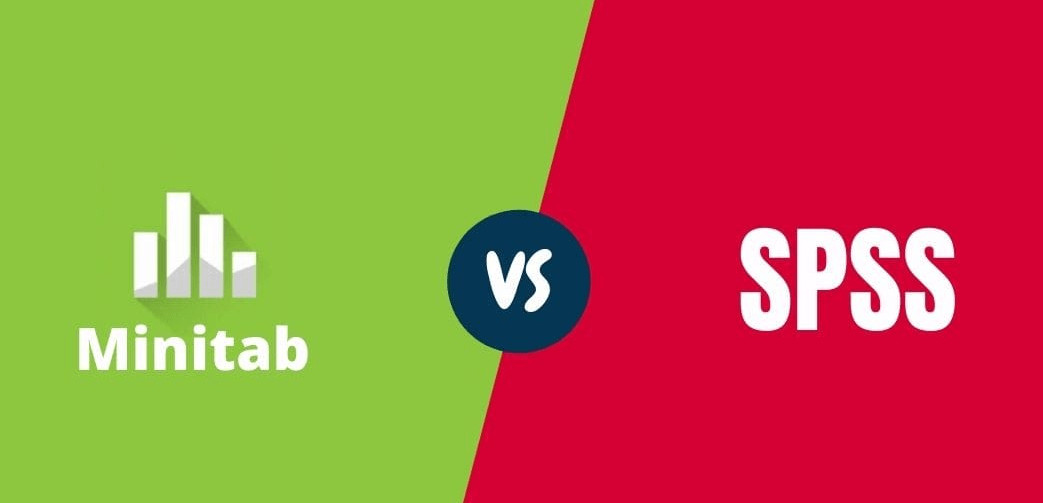- SPSS is an essential statistical software for data analysis in research and business.
- It offers advanced statistical analysis such as regressions, hypothesis testing, and data visualization.
- Its intuitive interface makes it easy to use, even for beginners in data analysis.
- SPSS helps in making informed decisions by extracting valuable information from data.

Welcome to the fascinating world of SPSS! If you’ve ever wondered what SPSS is and how it can improve your data analysis, you’ve come to the right place. SPSS, which stands for “Statistical Package for the Social Sciences,” is an essential tool for anyone working with data, whether in academic research, business, or any other field. In this article, we’ll take a deep dive into SPSS and its key features so you can get the most out of this powerful tool.
What is SPSS
SPSS is a widely used statistical software that allows users to efficiently perform data analysis. Originally developed by IBM in 1968, SPSS has become an industry standard for performing statistical and exploratory data analysis. What exactly is SPSS? It's a tool that facilitates data import, manipulation, analysis, and visualization. If you want to delve deeper into data analysis, you can take a look at data analysis tools most popular of the moment.
SPSS for data analysis
SPSS is a workhorse when it comes to data analysis. Why? Because it allows you to perform a wide range of tasks. statistical analysis, from the simplest to the most complex. You can use SPSS to calculate descriptive statistics, perform hypothesis tests, create regression models, and much more. What can SPSS do? The answer is virtually any statistical analysis you can imagine. Also, if you're interested in comparing tools, consider the comparison between SPSS and Minitab.
SPSS for decision making
One of the most powerful aspects of SPSS is its ability to help you make informed decisions. What is SPSS in this context? It's a tool that allows you to analyze data and extract valuable insights for strategic decision-making. Whether in business, academia, or research, SPSS can provide you with critical information to drive your success. For more information on choosing the right statistical tool, see this article.
SPSS for research
If you're a researcher, you'll be happy to know that SPSS can make your job easier. SPSS is widely used in academic research to analyze data from surveys, experiments, and longitudinal studies. Its ability to handle large data sets and perform advanced statistical analysis makes it an invaluable tool for any research project. If you'd like to learn more about data mining, visit data mining and data analysis.
SPSS in the business world
In the business world, SPSS is a tool Essential for data-driven decision-making. What is SPSS for business? It's a solution that can help you better understand your customers, identify market trends, predict product performance, and make sound strategic decisions. If you want your company to stay competitive, SPSS is a tool you should seriously consider. It may also be helpful to explore how statistical software works in general. this link.
Key Features of SPSS
Now that we have explored SPSS, let’s dive into some of its key features that make this tool so powerful and versatile.
1. Intuitive user interface
SPSS has a user-friendly interface that makes it easy to learn and use. Whether you're a beginner or an expert in data analysis, you'll feel comfortable navigating SPSS and performing analyses. For more details on how to get started with data mining, consider reading an introduction to data mining.
2. Flexible data import
One of the most notable features of SPSS is its ability to import data from a wide variety of sources, including spreadsheets, databases, and text files. This allows you to work with data efficiently, regardless of its original format.
3. Wide range of statistical analysis
SPSS offers a wide range of statistical analyses including descriptive statistics, hypothesis testing, analysis of variance, linear and nonlinear regression, survival analysis, and more.
4. Data visualization
Data visualization is essential to understanding patterns and trends in your data. SPSS allows you to create informative charts and tables that make it easy to interpret your results.
5. Automation of tasks
SPSS allows you to automate repetitive tasks, saving time and reducing the risk of errors. You can create scripts to perform specific analyses in a systematic manner.
6. Exporting results
Once you have performed your analyses, SPSS allows you to export your results in a variety of formats, including spreadsheets and text documents. This makes it easy to present your findings to colleagues or superiors.
7. Integration with other tools
SPSS integrates easily with other analysis tools and software, allowing you to make the most of your existing resources and data.
8. Support and community
If you ever encounter difficulties or have questions about SPSS and how to use it, you can count on IBM technical support and an active community of users who share their knowledge and experiences online.
Getting started with SPSS
Now that you know what SPSS is and what its main features are, it's time to take your first steps with this powerful tool. Here's a quick guide to get you started:
- Download and installation: Visit the official IBM website and download the latest version of SPSS. Follow the installation instructions to set up the tool on your system.
- Import your data: Use the SPSS data import feature to upload your datasets to the platform.
- Explore the interface: Familiarize yourself with the SPSS user interface. You can find online tutorials and official documentation to help you through this process.
- Perform simple analysis: Start with simple analysis, such as descriptive statistics, to understand your data.
- Explore advanced analytics: As you become more comfortable, venture into more advanced statistical analysis, such as regressions or hypothesis testing.
- View your results: Use SPSS data visualization tools to communicate your findings effectively.
- Automate tasks: As you gain experience, consider automating tasks to increase your efficiency.
- Community and resources: If you have questions or need help, search the SPSS online community or consult official IBM documentation.
FAQs
1. What is SPSS and what is it mainly used for?
SPSS, which stands for “Statistical Package for the Social Sciences,” is a statistical software used for data analysis in various fields such as academic research, business, and other sectors. It facilitates the import, manipulation, analysis, and visualization of data, making it essential for performing statistical and exploratory data analysis.
2. How can SPSS help in business or academic decision making?
SPSS is a powerful tool for making informed decisions, allowing you to analyze data and extract valuable information. In the business field, it helps you better understand customers, identify market trends, and predict product performance. In academic research, it facilitates the analysis of data from surveys and experiments, providing critical insights for research projects.
3. What types of statistical analysis can be performed with SPSS?
SPSS allows you to perform a wide range of statistical analyses, including descriptive statistics, hypothesis testing, analysis of variance, linear and nonlinear regression, and survival analysis. It is a versatile tool capable of handling both simple and complex analyses.
4. Is SPSS an easy-to-use tool for beginners in data analysis?
Yes, SPSS is known for its intuitive user interface, making it accessible to both beginners and experts in data analysis. Additionally, there are numerous resources and tutorials available that can help users get familiar with the tool.
5. How does SPSS integrate with other analysis tools and software?
SPSS offers good integration with other analysis tools and software, allowing users to make the most of their existing resources and data. This integration capability facilitates collaborative work and efficient use of different data platforms.
6. What support and resources are available for SPSS users?
SPSS users can rely on IBM technical support and an active online community that shares knowledge and experiences. In addition, there is official documentation, online tutorials, and discussion forums that offer assistance and advice for resolving specific questions or problems.
Conclusion
In short, SPSS is an essential tool for anyone working with data. Whether in academic research, the business world, or any other field, knowing what SPSS is and how to use it can make all the difference in making informed decisions and achieving success in your projects. With its intuitive interface, wide range of statistical analysis, and automation capabilities, SPSS is a powerful tool that can supercharge your data analysis skills. Start exploring the world of SPSS today and discover all it can do for you!
If you found this article useful and informative, please share it with your friends and colleagues! Sharing knowledge is a powerful way to enrich our skills and help others succeed in their data analysis projects. Together we can make the most of what SPSS has to offer!
Table of Contents
- What is SPSS
- Key Features of SPSS
- Getting started with SPSS
- FAQs
- 1. What is SPSS and what is it mainly used for?
- 2. How can SPSS help in business or academic decision making?
- 3. What types of statistical analysis can be performed with SPSS?
- 4. Is SPSS an easy-to-use tool for beginners in data analysis?
- 5. How does SPSS integrate with other analysis tools and software?
- 6. What support and resources are available for SPSS users?
- Conclusion

